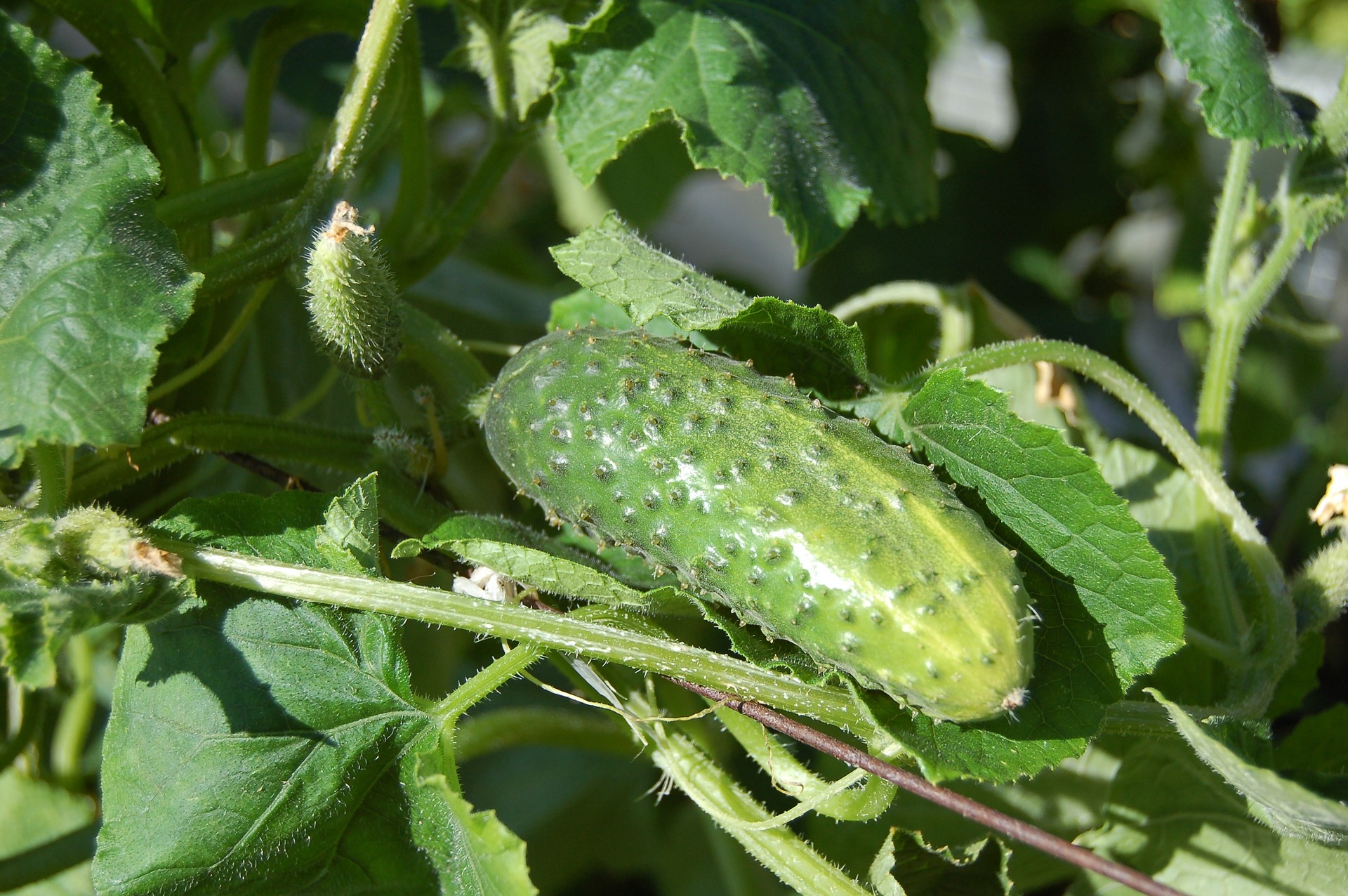The main types of cultivars are divided based on cultivation methods and usage. Thus, we distinguish between cultivars for open-field cultivation and those for protected spaces. According to their usage, salad cultivars (for fresh consumption) and pickling cultivars (commonly known as “cornichons”) have been developed.
In the production of cucumbers for the market and natural consumption, predominantly female and purely female hybrid (F1) cultivars are most commonly used. For pollination, they are usually sold mixed with about 10% of a similar monoecious cultivar. In protected spaces, parthenocarpic purely female hybrid (F1) cultivars, which do not require pollinators, are mainly produced. Some of the salad varieties include the “Green Hit.”
Jazzer F1
This is a very early hybrid suitable for greenhouse production and open-field cultivation. The fruits are warted and dark green. In the production of cucumbers for the market and natural consumption, predominantly female and purely female hybrid (F1) cultivars are most commonly used. For pollination, they are usually sold mixed with about 10% of a similar monoecious cultivar. For protected spaces, parthenocarpic purely female hybrid (F1) cultivars, which do not require pollinators, are primarily produced. The fruit length is 18-22 cm. The flowers are 100% female. The stem is moderately vigorous, not forming many lateral shoots. The yield is high.
Pontia F1
This is a mid-early hybrid. The stem is strong and vigorous, forming many lateral shoots. The flowers are 100% female. The fruits are dark green, warted, and maintain a nice, slender shape for a long time, with few seeds. The fruit length is 20-22 cm. It is recommended for cultivation in both open fields and protected spaces. This hybrid is suitable for autumn production due to its good cold resistance. The yield is high.
Some of the cucumber varieties for pickling (Bejo zaden):
| Variety | Days to first harvest | General characteristics |
|---|---|---|
| Adam F1 | 57 | – Early parthenocarpic variety – early maturing and high-yielding – fruits are smooth, dark green, not bitter, with a length-to-width ratio of 3.1:1 – suitable for mechanical harvesting – good tolerance to downy mildew, powdery mildew, mosaic virus, and resistant to fruit scab |
| Amour F1 | 75 | – Parthenocarpic hybrid – fruits are dark green, finely spined with a length-to-width ratio of 3.2:1 – develops a strong root system – handles mosaic virus, powdery mildew, and downy mildew well |
| Atlantis F1 | 71 | – Predominantly female hybrid (not parthenocarpic) with high yield – fruits are warted, dark green, non-bitter with a length-to-width ratio of 3.2:1 – excellent for pickling – less sensitive to fruit scab |
| Alibi F1 | 82 | – Predominantly female hybrid – fruits are warted, light-colored, and non-bitter – good tolerance to powdery mildew and mosaic virus – resistant to Cladosporium |
| Asterix F1 | 85 | – Predominantly female hybrid – fruits are warted, dark green, and non-bitter – very good tolerance to downy mildew, powdery mildew, and cucumber mosaic virus – resistant to Cladosporium |













































